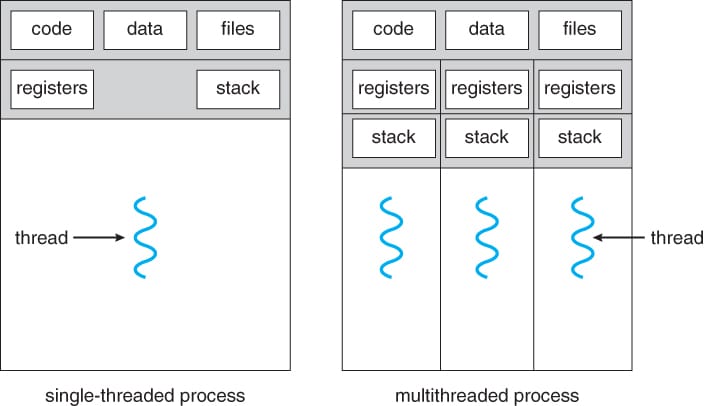Designing APIs for Microservices

In the world of microservices, APIs are the backbone that enables communication and data exchange between different services. Designing robust, scalable, and maintainable APIs is crucial for the success of any microservices architecture. In this post, we'll explore the best practices for designing microservices APIs, covering key aspects such as choosing the right communication protocols, ensuring backward compatibility, handling versioning, and maintaining comprehensive documentation.
Choosing the Right Communication Protocol
When designing microservices APIs, one of the first decisions to make is selecting the appropriate communication protocol. The two most common options are RESTful APIs and gRPC.
RESTful is an architectural style for designing networked applications. It relies on a stateless, client-server communication protocol, typically HTTP.
Advantages:
- Simplicity and Ubiquity:
- Easy to understand and use, leveraging standard HTTP methods (GET, POST, PUT, DELETE).
- Widely supported across different platforms and languages.
- Human-Readable:
- Data is often transmitted in JSON or XML, which is easy to read and debug.
- Statelessness:
- Each request from client to server must contain all the information the server needs to fulfill that request, simplifying server design.
- Cacheable:
- Responses can be cached to improve performance and scalability.
- Interoperability:
- Due to its wide adoption, many tools and libraries are available for RESTful APIs, facilitating integration.
Disadvantages:
- Performance Overhead:
- JSON or XML payloads are verbose compared to binary formats, leading to increased bandwidth usage.
- Lack of Standardization:
- No strict standards for creating REST APIs, leading to inconsistent implementations.
- Limited Protocol Support:
- Primarily uses HTTP/1.1, though HTTP/2 support is improving, but it's still less flexible compared to other transport protocols.
- Client-Server Coupling:
- Changes in the API can require updates to client code, leading to tighter coupling.
gRPC is a high-performance RPC framework that uses HTTP/2 for transport and Protocol Buffers for compact, binary serialization, enabling efficient, strongly-typed communication between services.
Advantages:
- Performance:
- Uses HTTP/2 for transport, which allows multiplexing, header compression, and more efficient use of network resources.
- Data is transmitted in Protocol Buffers (Protobuf), a compact binary format, reducing bandwidth usage.
- Strong Typing and Contract-First Development:
- gRPC uses Interface Definition Language (IDL) to define service methods and message types, enabling strong typing and compile-time checks.
- Bidirectional Streaming:
- Supports streaming in both directions, allowing for real-time communication and data transfer.
- Code Generation:
- Automatically generates client and server code in multiple languages, reducing boilerplate and ensuring consistency.
- Interoperability:
- Supports multiple languages and platforms, with consistent and efficient cross-language communication.
Disadvantages:
- Complexity:
- Steeper learning curve due to the need to understand Protocol Buffers and the gRPC framework.
- Binary Format:
- Protobuf is not human-readable, making debugging and manual testing more challenging.
- Tooling and Ecosystem:
- While growing, the ecosystem and tooling are not as mature and extensive as those for RESTful APIs.
- Limited Browser Support:
- gRPC is not natively supported by browsers, requiring additional libraries or proxies to interact with web clients.
Recommendation:
- Use RESTful APIs for general-purpose microservices that require flexibility and ease of use.
- Use gRPC for high-performance, inter-service communication where efficiency and speed are critical.
Ensuring Backward Compatibility
Backward compatibility is essential to avoid breaking existing clients when updating your API. Here are some best practices:
- Never Remove Fields: Instead of removing fields, mark them as deprecated and add new fields as necessary.
- Use Default Values: Assign default values to new fields to ensure older clients can still function without changes.
- Implement Feature Flags: Use feature flags to control the rollout of new features, allowing gradual adoption and rollback if needed.
- Versioning: Use semantic versioning (e.g., v1, v2) to manage API changes. Introduce new versions for breaking changes and keep old versions operational for a reasonable time.
Handling API Versioning
API versioning is crucial for managing changes and ensuring stability. There are several strategies to handle versioning:
- URI Versioning: Include the version number in the URL (e.g.,
/api/v1/resource). - Header Versioning: Use custom headers to specify the API version (e.g.,
X-API-Version: 1). - Query Parameter Versioning: Use query parameters to indicate the version (e.g.,
/api/resource?version=1).
Recommendation:
- URI Versioning is the most common and straightforward approach. It makes versioning explicit and easy to understand for clients.
API Documentation
Comprehensive documentation is critical for the successful adoption and maintenance of microservices APIs. Follow these best practices:
- Use OpenAPI/Swagger: Standardize your API documentation using OpenAPI (formerly Swagger). Tools like Swagger UI can generate interactive documentation from OpenAPI specifications.
- Auto-Generate Documentation: Integrate documentation generation into your build process to ensure it stays up-to-date with your code.
- Provide Examples: Include detailed examples of requests and responses for each endpoint.
- Describe Error Handling: Document possible error codes and messages, along with guidance on how to handle them.
Additional Best Practices
- Consistent Naming Conventions: Use consistent naming conventions for endpoints, parameters, and payloads to make APIs intuitive.
- Pagination: Implement pagination for endpoints that return large lists of items to improve performance and user experience.
- Rate Limiting: Protect your APIs from abuse by implementing rate limiting to control the number of requests a client can make.
- Security: Use HTTPS for secure communication, implement authentication and authorization (e.g., OAuth2), and validate all inputs to prevent security vulnerabilities.
Designing microservices APIs requires careful consideration of various factors, from choosing the right communication protocol to ensuring backward compatibility and maintaining thorough documentation. By adhering to these best practices, you can create APIs that are not only efficient and reliable but also easy to use and maintain. In the ever-evolving landscape of microservices, these principles will help you build a solid foundation for your architecture.



Comments ()